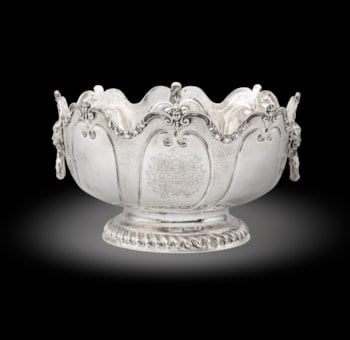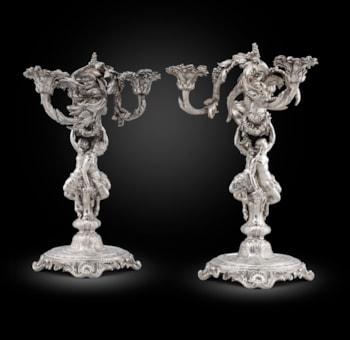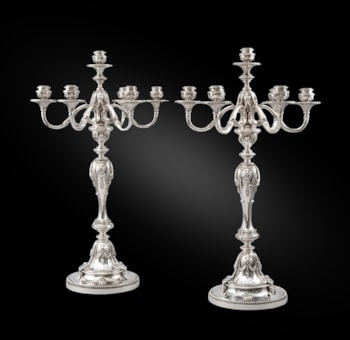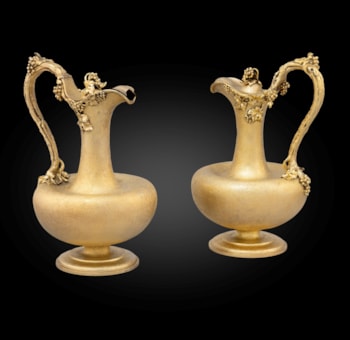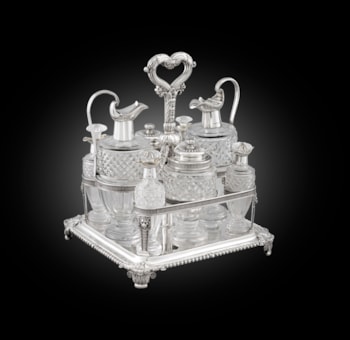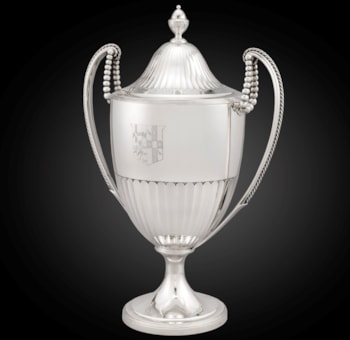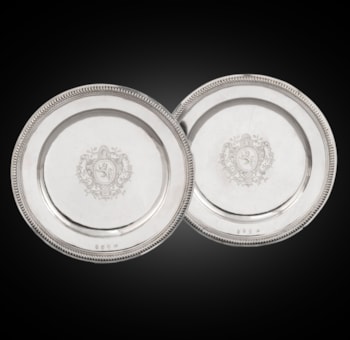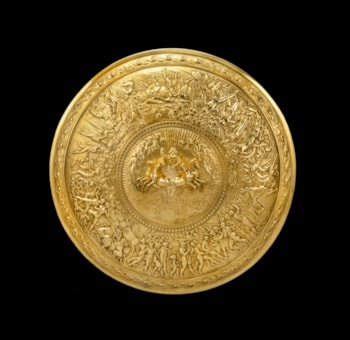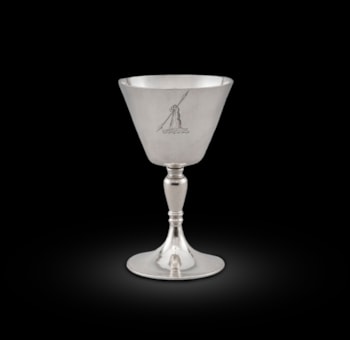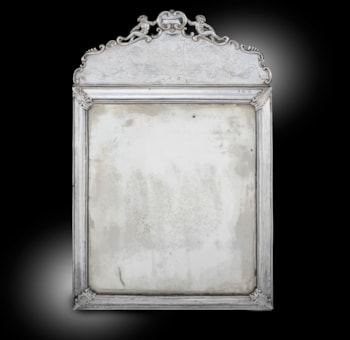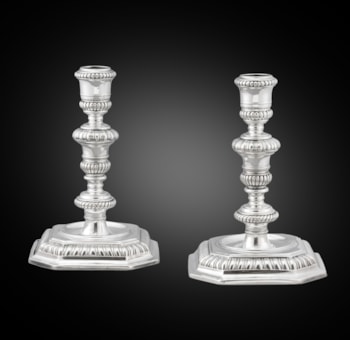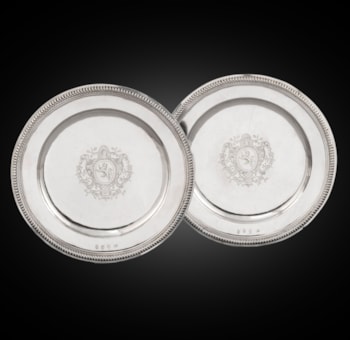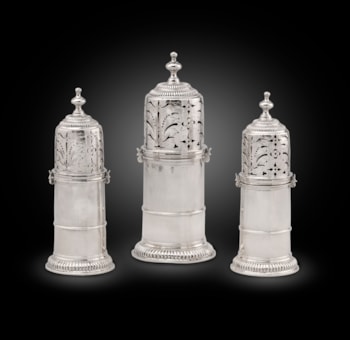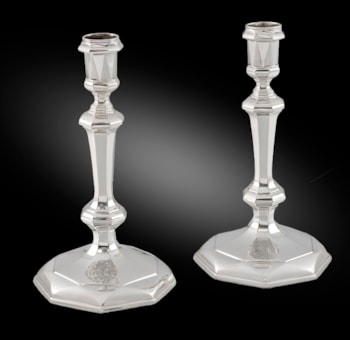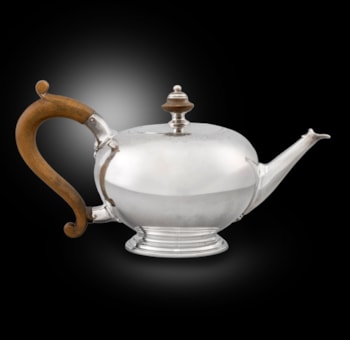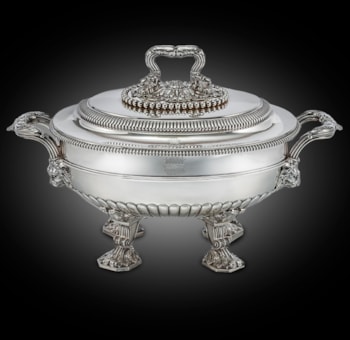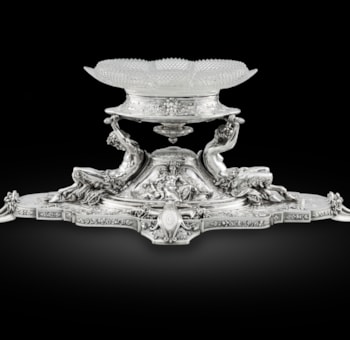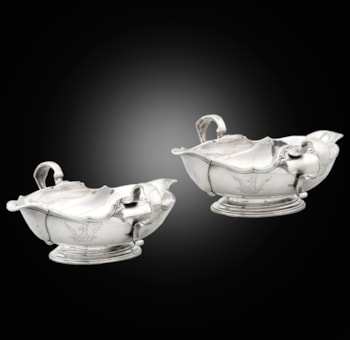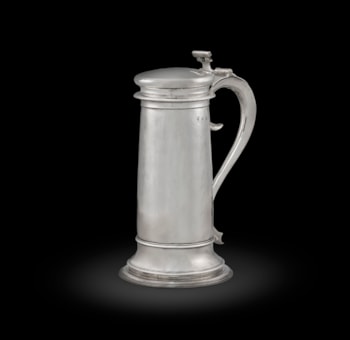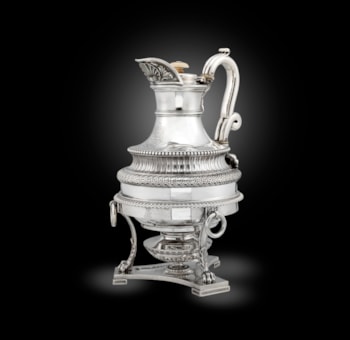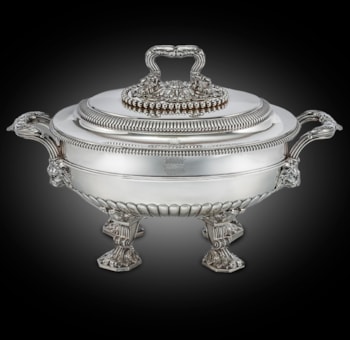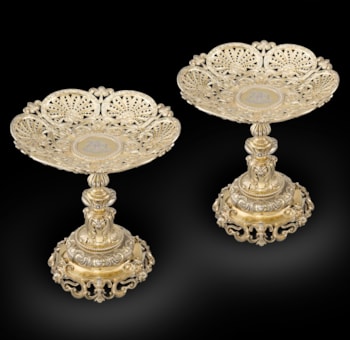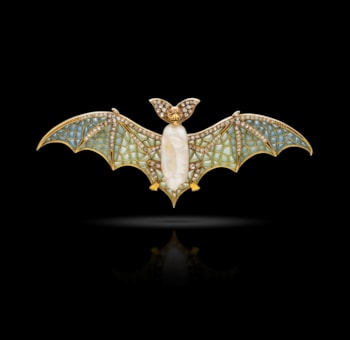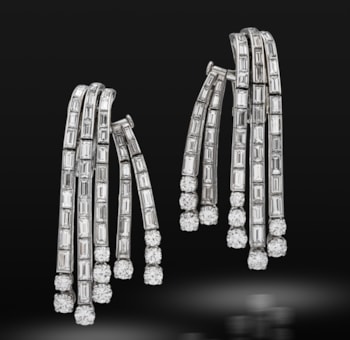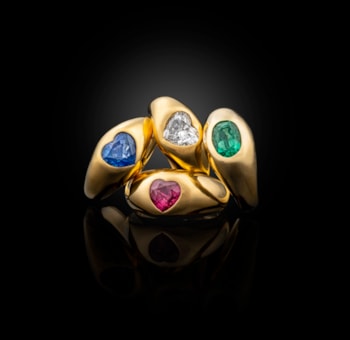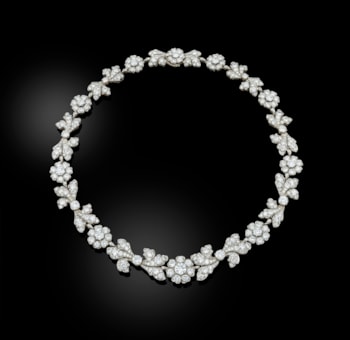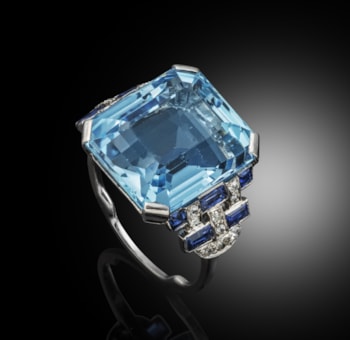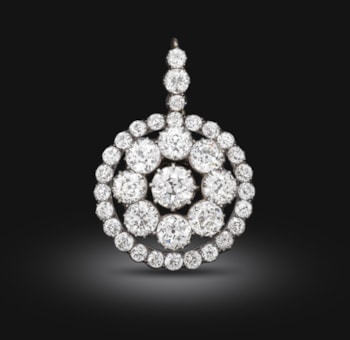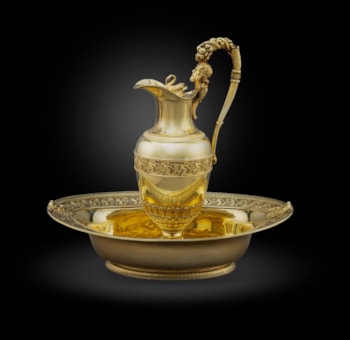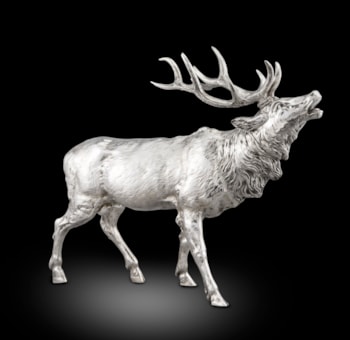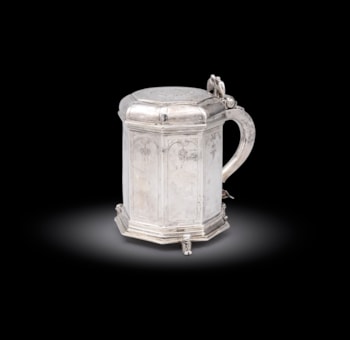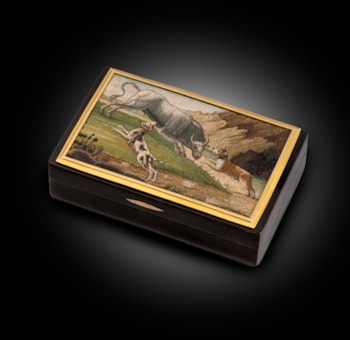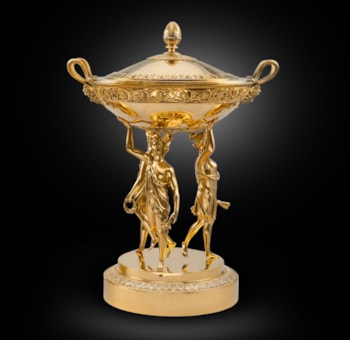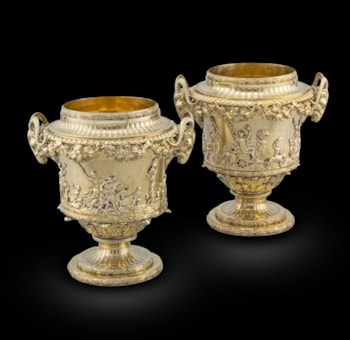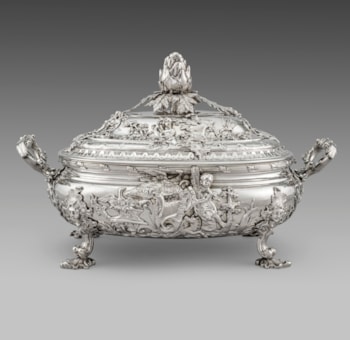Farrell's apprenticeship or freedom are unrecorded, and his early life is relatively unknown. Holden's Triennial Directory of 1805-7 described him as a silversmith, but his first mark was not registered until 1813. The most productive period of Farrell's career coincided with his association with the entrepreneur, silversmith, and jeweller Kensington Lewis, whose most important patron was Frederick, Duke of York.
Lewis was supplied with extravagant sculptural plate in a variety of revival styles by Farrell, drawing principally on seventeenth-century Flemish, German and Italian designs in high relief. Lewis' business was unable to recover from the death of the Duke of York in 1827, and Farrell no longer had the opportunity to make the plate on such a grand scale. Thereafter, he was best known for highly embossed tea services chased with decoration derived from seventeenth-century Dutch and Flemmish genre paintings and in particular David Teniers the Younger.
Teniers was one of the most important seventeenth-century Flemish painters of low-life scenes. He first studied painting under his father in Antwerp. Although he painted some small religious pieces in the 1630s, it was his genre scenes that were most popular and for which he is best remembered. By 1633 he had become master of the Antwerp Guild of St Luke, and in 1644 he was appointed as Dean. He enjoyed the patronage of some of the most prominent men in the southern Netherlands, including the Bishop of Bruges and Archduke Leopold William, to whom he became court painter in 1651. Teniers’s success brought him great wealth, and his paintings remained popular long after his death. They were particularly admired by nineteenth-century collectors.

Sir Charles Ogle, 2nd Baronet (May 24, 1775 – June 16, 1858) was Admiral of the Fleet in the Royal Navy. He was the eldest son of Admiral Sir Chaloner Ogle, 1st Baronet, a grandnephew of Sir Chaloner Ogle, Admiral of the Fleet, and son-in-law of General Thomas Gage, leader of British forces at the start of the American Revolution.
He entered the British Navy in 1787, on board the HMS Adventure, with Captain John Nicholson Inglefield. After uneventful service on different ships on the coast of Africa and home stations, he was made Lieutenant into the Woolwich, in the West Indies, on November 14, 1793. In January 1794, he moved into the Boyne, flagship of Sir John Jervis, and in May was appointed acting-Captain of the Assurance. On 21 May 1795, he was confirmed as Commander of the sloop Avenger, from which he was moved to the Petrel, and on January 11, 1796, in the Mediterranean, was posted by Jervis to the Minerve. During the following years he commanded the Meleager, Greyhound, and Egyptienne, for the most part in the Mediterranean. In 1805 he commanded the frigate Unité, and in 1806 was appointed to the yacht Princess Augusta, which he commanded until August 1815, when he took command of the Ramillies in the Channel. In November 1815 he commanded the Malta at Plymouth, and in 1816 the Rivoli at Portsmouth. On the death of his father on August 27, 1816, he succeeded to the baronetcy, and inherited the family estate at Kings Worthy, Hampshire which he sold in 1826.
He was promoted to Rear-Admiral on August 12, 1819, and Commander-in-Chief in North America (1827–1830), became Vice-Admiral on July 22, 1830, Admiral on November 23, 1841, and was Commander-in-Chief at Portsmouth (1845–1848). He was promoted to be Admiral of the Fleet on December 1857, and died at Tunbridge Wells, England, on June 16, 1858.
Ogle married in April 22, 1802 as his first wife Charlotte Margaret Gage, the daughter of General Thomas Gage and Margaret Kemble Gage. She died in September 1814 leaving two daughters and a son, Chaloner, who succeeded to the baronetcy, but was disinherited by his father. He married on September 4, 1820, as his second wife Letitia Burroughs, the daughter of Sir William Burroughs, Bart. She died on November 13, 1832. He married on April 10, 1834, as his third wife Mary Anne Cary, the daughter of George Cary of Tor Abbey). She died without issue on February 4, 1842.
Farrell's apprenticeship or freedom are unrecorded, and his early life is relatively unknown. Holden's Triennial Directory of 1805-7 described him as a silversmith, but his first mark was not registered until 1813. The most productive period of Farrell's career coincided with his association with the entrepreneur, silversmith, and jeweller Kensington Lewis, whose most important patron was Frederick, Duke of York. Lewis was supplied with extravagant sculptural plate in a variety of revival styles by Farrell, drawing principally on seventeenth-century Flemish, German and Italian designs in high relief. Lewis' business was unable to recover from the death of the Duke of York in 1827, and Farrell no longer had the opportunity to make the plate on such a grand scale. Thereafter, he was best known for highly embossed tea services chased with decoration derived from seventeenth-century Dutch genre painting.
You May Also Like




